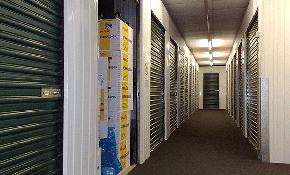 Smith: “The overall impact is a more environmentally and financially sustainable property.”
Smith: “The overall impact is a more environmentally and financially sustainable property.”
SAN DIEGO—Green technologies can improve operations, make buildings more comfortable for their occupants and lower utility and maintenance expenses, freeing up capital, NEO Realty Group’s managing broker Brant Smith, CPM, tells GlobeSt.com. We spoke exclusively with Smith about green technologies and the variety of benefits they provide property owners and managers.
GlobeSt.com: How do new green technologies help property managers increase efficiency and sustainability to boost NOI?
Smith: There are two or three major points to make here. Green technologies are products or services related to physical assets that typically improve operational efficiency, make the building more comfortable for the occupants, lower utility and maintenance expenses, and reduce environmental impact. Often, equipment with green technologies lasts longer and makes for a well-managed building. It reduces operating costs on individual line items (like water, natural gas and electricity) and helps to increase the top line by providing better spaces and getting better rents. This helps to increase NOI. These technologies apply to building systems ranging from lighting, lighting control, and HVAC, as well as interior finishes such as low-VOC paints and flooring, and other technologies and systems that impact tenant engagement such as bike racks and recycling programs. The overall impact is a more environmentally and financially sustainable property.
GlobeSt.com; How do you balance what’s good for the environment with what’s good for the bottom line?
Smith: The way we’ve approached it in our business and the way that IREM has approached it through the IREM Certified Sustainable Property program is that a full accounting of green technologies and sustainability programs includes the positive impact on the triple-bottom-line—with social, environmental and financial benefits all considered. Improvements are often planned around NOI, so generally most have financial benefits, in addition to the environmental benefit. Assessing these specifically from a building operations perspective, the Certified Property Manager (CPM) is making decisions according to the owner’s financial objectives. So, analyzing how the use of green technologies matches up with the owner’s goals for specific buildings is a primary objective. There are social, economic and environmental benefits from green technologies that suit different owners’ objectives. Some owners will want a two-to-three-year payback that strictly accounts for cost savings, while others will accept a longer payback for an economic return that is inclusive of intangible benefits such as positive PR and community goodwill.
GlobeSt.com: What’s the best way to stay on top of green technologies that will offer the most benefits?
Smith: Being engaged in industry groups such as IREM, IFMA and CoreNet—if you’re involved in an industry group, you’ll have access to some knowledge sharing about these technologies. I also recommend being involved in something outside of your typical comfort zone. Go to educational sessions, whether through USGBC or 2030 Districts, to get a different perspective on things. This can help you stay leading edge. Additionally, studying and reviewing the different certification programs whether through IREM or ENERGY STAR, to better understand what their benchmarks or guidelines are, will help broaden a property manager’s perspective.
GlobeSt.com: What else should our readers know about green technologies?
Smith: Here are some closing thoughts. First, assess things from a total life-cycle cost; there’s not only the immediate, direct, utility-expense reduction associated with green technologies, but there are also longer-term reductions in life-cycle costs related to maintenance and repair, which are just as important. Second, review products and services carefully, to ensure they’re properly certified. Example certifications for different products and services include Green Seal, Green-e and ENERGY STAR. Lastly, if you’re a building owner or management company, look at things strategically. There’s a whole level of upside income that can also be derived from green technologies that can be integrated into tenant spaces; as building occupants are more satisfied and comfortable, a property can potentially demand higher rents.

















 Copyright © 2024 ALM Global, LLC. All Rights Reserved.
Copyright © 2024 ALM Global, LLC. All Rights Reserved.